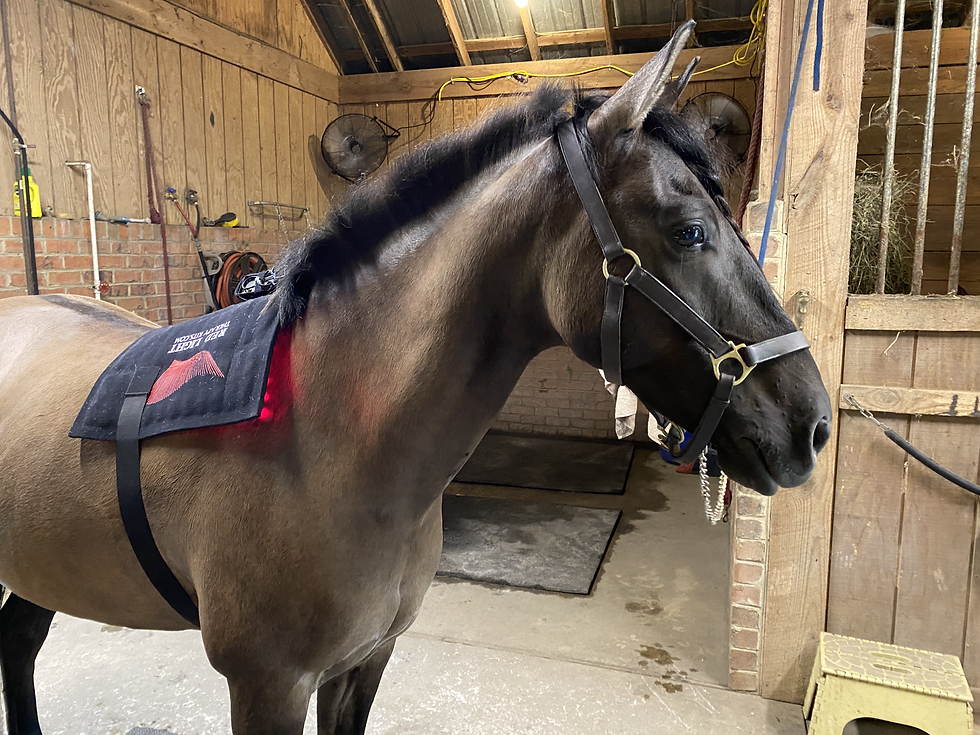Radiant Healing: The Science and Promise of Photobiomodulation
- stephanie pope

- Aug 23, 2023
- 14 min read
Updated: Sep 25, 2024

In the intricate dance between science and nature, there exists an extraordinary phenomenon that captivates researchers, clinicians, and wellness enthusiasts alike—photobiomodulation. At the heart of this captivating journey lies the profound influence of light on the cells and tissues of living organisms. From ancient civilizations' reverence for sunlight's healing touch to the cutting-edge technology that now allows us to wield light's therapeutic potential, the story of photobiomodulation is one of evolution, discovery, and the pursuit of optimal well-being.
In this illuminating exploration, we venture into the captivating realm of photobiomodulation, delving into its mechanisms, historical roots, and contemporary applications. We'll uncover its transformative effects on both animals and humans, unveiling a shared journey of healing and vitality that traverses species boundaries. As we peel back the layers of the intricate interplay between light and life, we'll discover the remarkable promise that photobiomodulation holds for enhancing health, promoting rejuvenation, and kindling a radiant future where light shines as a beacon of healing.
Join us as we embark on a voyage of discovery, where light takes center stage, and the harmonious marriage of nature's brilliance and human ingenuity paves the way for a brighter, healthier existence. Welcome to the realm of photobiomodulation—a journey that bridges the ancient wisdom of light's healing touch with the modern marvels of science.
Tracing the Historical Journey of Light's Healing Power
In the realm of wellness and healing, some of the most remarkable breakthroughs find their roots in the distant echoes of history. Among these, the captivating journey of red light therapy emerges—a journey that threads through the corridors of time, connecting ancient civilizations to the modern world's cutting-edge medical practices. Imagine ancient healers harnessing the power of sunlight and colored light, laying the foundation for a therapeutic marvel that transcends centuries.
To embark on this enlightening voyage, we must first delve into the annals of history and grasp the origins of red light therapy. By understanding its historical evolution, we unlock a profound understanding of photobiomodulation—a concept that intertwines light and life in ways that have shaped both animal and human well-being. So, let us journey together through the ages, as we uncover the remarkable chapters that illuminate the past and pave the way for the radiant future of red light therapy.
Ancient Civilizations

As we venture into the origins of red light therapy, we are transported to the heart of ancient civilizations that recognized the profound connection between light and well-being. Millennia ago, amidst the grandeur of Egypt, Greece, and Rome, a deep understanding of nature's healing potential began to take shape. Sunlight, with its radiant embrace, was revered for its therapeutic prowess. These ancient cultures harnessed the soothing caress of sunlight and experimented with the enchanting effects of specific colored lights. From the sun-drenched shores of the Nile to the marble courtyards of Athens, the healing qualities of light seeped into the tapestry of daily life. Wound healing, skin rejuvenation, and a sense of holistic vitality were all woven into the fabric of ancient wisdom, forming the earliest chapters of the remarkable story of red light therapy.
Niels Finsen and Nobel Prize

In the late 19th and early 20th centuries, the pioneering spirit of Danish physician Niels Ryberg Finsen illuminated the path to a revolutionary understanding of light's healing properties. Finsen's unwavering dedication led him to delve into the intricate interplay between light and health, a pursuit that would forever alter the course of medical history. It was his groundbreaking research that laid the foundation for the modern concept of light therapy. Finsen's most profound moment of recognition arrived in 1903 when the Nobel Prize in Physiology or Medicine was bestowed upon him. This prestigious accolade celebrated his remarkable work in utilizing light therapy to treat tuberculosis of the skin, a testament to his pioneering spirit and the transformative power of light in medical science. Finsen's legacy not only kindled the flame of curiosity but also ignited a renewed fervor to explore the potential of light as a therapeutic tool, guiding us toward the illuminating realm of red light therapy.
Development of Artificial Light Sources

With the advent of the modern era and the marvel of electricity, humanity embarked on a journey to replicate the healing power of sunlight through ingenious means. The mid-20th century witnessed a symphony of innovation as researchers and scientists orchestrated the development of artificial light sources for therapeutic endeavors. Incandescent bulbs and fluorescent lights became the brushstrokes of this newfound canvas, painting targeted beams of light for curative purposes. This radiant evolution not only rekindled ancient wisdom but propelled it into uncharted territories of scientific exploration. The once-undiscovered wavelengths of light, harnessed through these ingenious inventions, would go on to touch the realms of pain management, dermatology, and wound healing, forever shifting the paradigm of medical practice. The brilliance of human ingenuity, now encapsulated in these artificial luminaries, continues to illuminate our understanding of red light therapy's transformative potential.
Introduction of Lasers
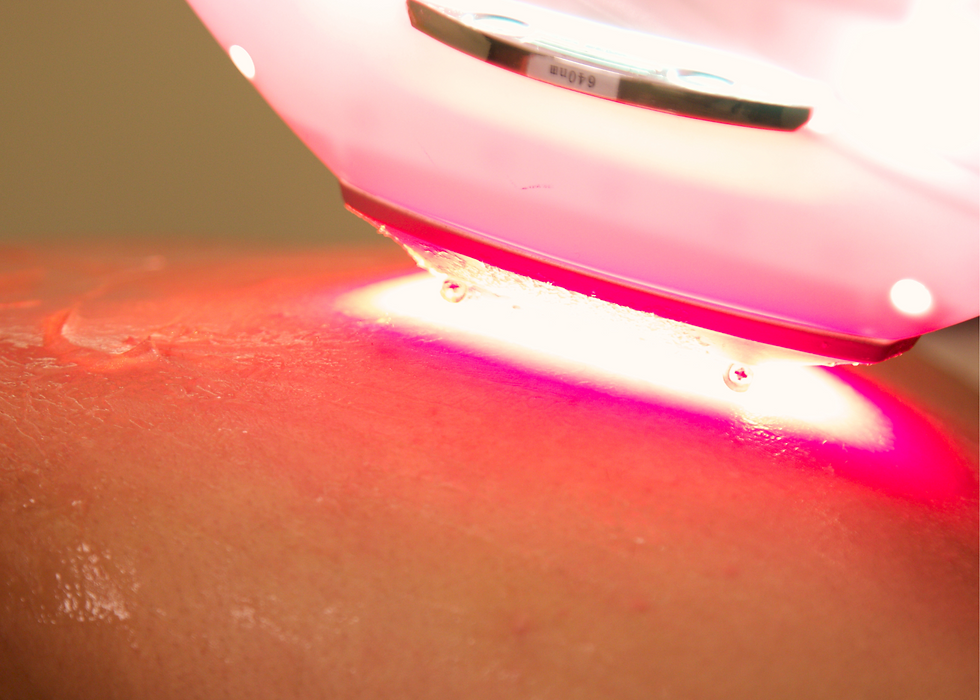
In the mid-20th century, a groundbreaking innovation emerged that would amplify the potential of light therapy to unprecedented heights—lasers. These precise beams of coherent light revolutionized medical science, transcending the confines of surgical theaters and diagnostic labs. Laser technology gifted humanity with the ability to manipulate light's very essence, unlocking the intricacies of wavelengths and intensities. Originally harnessed for surgical precision, these focused beams of light soon unveiled their latent therapeutic prowess. Their introduction birthed the concept of low-level laser therapy (LLLT), a radiant revelation that ignited new avenues of healing. The narrative of light therapy expanded as lasers merged ancient wisdom with modern precision, heralding an era where specific wavelengths held the power to stimulate regeneration, tame inflammation, and mend the body's very fabric. Join us as we journey through the dynamic interplay between lasers and human well-being, uncovering the radiant promise of red light therapy.
Research and Clinical Applications
As the rays of research converged with the evolving understanding of light's therapeutic potential, a tapestry of knowledge unfurled before us. Scientists embarked on a journey to decipher the intricate mechanisms through which red and near-infrared light interacted with our biological systems. The result was a symphony of studies that unveiled the remarkable orchestration of cellular responses. From the revelation of increased mitochondrial activity to the soothing dimming of inflammation, each discovery was a testament to the transformative power of light on our well-being. With this scientific canvas as their guide, clinicians began to paint new possibilities for medical practice. Dermatology, pain management, wound healing, and sports medicine—each field embraced red light therapy as a tool to facilitate healing, alleviate suffering, and enhance quality of life. The history of red light therapy thus blossomed into a testament to the synergy of science and care, where research revelations find their ultimate purpose in the hands of those dedicated to fostering well-being.
Technological Advancements

As history unfolded its pages, so did the ingenuity of technological progress, shaping red light therapy into a modern marvel. Amidst these transformative innovations, light-emitting diodes (LEDs) took center stage—a sophisticated evolution in the realm of light-based healing. With LEDs, the therapeutic potential of specific wavelengths of light could be harnessed with precision, while minimizing the generation of excess heat. These devices heralded an era of accessibility, where red light therapy could seamlessly extend its radiance beyond clinical settings. From the corridors of medical facilities to the intimacy of homes, LEDs provided a safe and efficient conduit for red and near-infrared light's transformative touch. The tapestry of progress continues to weave as advancements in technology illuminate new horizons for red light therapy, fostering a symbiotic relationship between science, innovation, and well-being.
Red Light Therapy Today
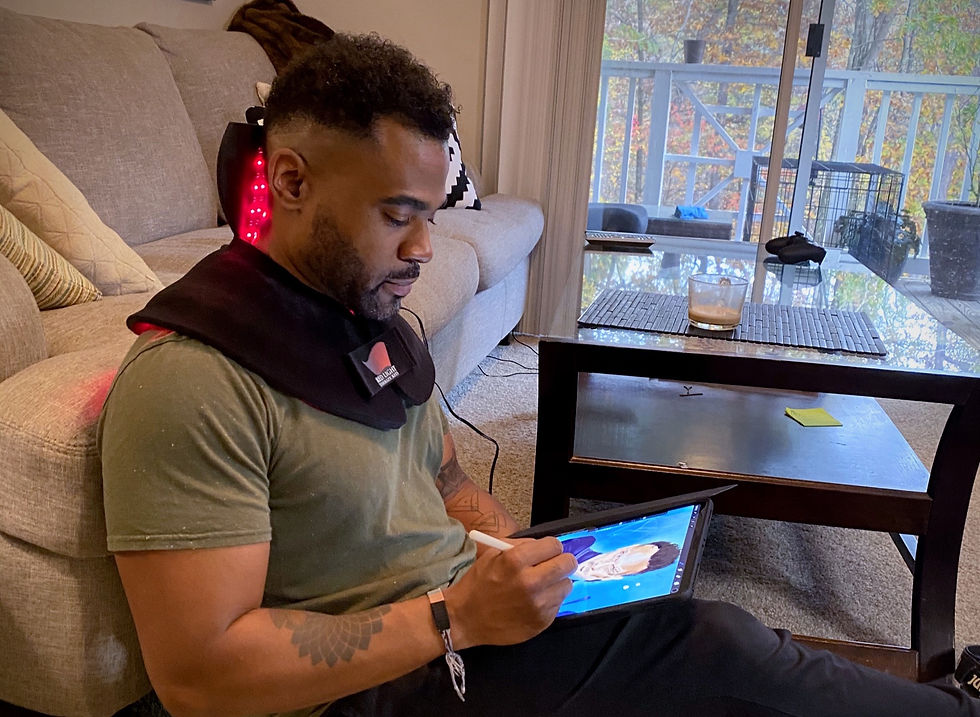
Today, red light therapy stands as a beacon of hope and discovery, embraced for its remarkable potential to foster well-being in both humans and animals. With a growing corpus of scientific research illuminating its virtues, red light therapy has emerged as a trusted companion on the journey to health. While the scientific exploration is ongoing, its reputation as a non-invasive and low-risk therapeutic avenue has surged. From clinics and fitness centers to veterinary practices, the allure of red light therapy has captivated the attention of diverse domains. Skin health finds rejuvenation under its gentle gaze, wounds embrace accelerated healing, pain surrenders to its soothing touch, and inflammation bows to its transformative power. As we stand at the nexus of technology and tradition, the history of red light therapy converges with the present, casting a vibrant glow upon the path to a brighter, healthier future.
Understanding Photobiomodulation: A Exploration into Cellular Healing
Photobiomodulation (PBM), often referred to as low-level light therapy (LLLT) or cold laser therapy, represents a pioneering branch of phototherapy that harnesses the potency of light to trigger transformative effects within cells and tissues. This revolutionary technique employs low-intensity light sources, such as lasers or light-emitting diodes (LEDs), to initiate intricate biological processes that pave the way for healing and rejuvenation. PBM holds the promise of addressing an array of health concerns through the strategic application of specific light wavelengths to targeted regions of the body.
Photobiomodulation Mechanisms of Action
Cellular Chromophores and Light Absorption - At the heart of PBM lies an intimate dance between light and cellular chromophores—molecules that possess a unique affinity for specific wavelengths of light. These molecules, like the attentive audience of a symphony, receive the gentle touch of light energy. One notable protagonist in this narrative is cytochrome c oxidase, nestled within mitochondria. When specific wavelengths of light encounter these chromophores, they're absorbed, triggering a sequence of events that initiate a cellular response.
Cascade of Cellular Signaling Pathways - The absorption of light energy sparks a cascade of cellular signaling pathways, akin to a sequence of harmonious notes in a musical composition. These pathways act as messengers, transmitting the influence of light across the cellular landscape. A symphony of interactions commences, influencing various aspects of cellular behavior, from energy production to inflammation modulation.
Mitochondrial Activation and Enhanced Energy Production - One of the central effects of PBM is the activation of mitochondria—the energy powerhouses of cells. As specific wavelengths of light interact with cytochrome c oxidase, mitochondrial activity surges. This surge is a transformative event, resulting in heightened production of adenosine triphosphate (ATP), the energy currency that fuels cellular processes. This infusion of energy sets the stage for improved cellular function and overall vitality.
Reducing Oxidative Stress and Inflammation - The orchestra of effects orchestrated by PBM extends to the realm of cellular stress and inflammation. By modulating cellular pathways, PBM exerts a calming influence on oxidative stress—a phenomenon rooted in the imbalance between free radicals and antioxidants. The release of reactive oxygen species is tempered, alleviating oxidative stress's disruptive effects. Additionally, the influence extends to inflammation, as PBM curbs the release of pro-inflammatory molecules, fostering an environment of soothing respite.

Photobiomodulation Light Wavelengths
The spectrum of light is a vivid canvas painted with an array of diverse wavelengths, each carrying its own unique influence on intricate cellular processes. In this captivating interplay, photobiomodulation finds its affinity with specific wavelengths, drawn by their potential to reach deep within tissues. This technique embraces a palette of light wavelengths spanning from 600 to 1,000 nanometers, each imbued with distinctive attributes that resonate with cellular responses.
These wavelengths possess a remarkable ability to penetrate the skin's barrier, allowing them to gracefully traverse through deeper layers and engage with cells and mitochondria—an ideal quality for therapeutic applications. From the warmth of red light to the gentle touch of near-infrared light, this diverse spectrum holds the master key to unlocking various facets of cellular healing. With each wavelength resonating uniquely with cellular components, they initiate responses that span from controlling inflammation and aiding tissue repair to enhancing circulation and alleviating pain. By delving into the spectrum's effects, we unravel a nuanced understanding that empowers us to craft therapies precisely tailored to the specific needs of cells and tissues.
In essence, photobiomodulation transforms light from a mere visual phenomenon into a potent instrument of healing. By intricately engaging with cellular processes through the absorption of light energy, PBM unveils a spectrum of effects that converge to support improved cellular function, heightened energy production, inflammation modulation, and the fostering of tissue repair. This captivating dance between light and biology holds the potential to illuminate a new era of health and well-being.

Applications of Photobiomodulation
Photobiomodulation has been studied and applied in various medical and therapeutic areas, including:
Pain management: PBM has shown potential for reducing acute and chronic pain, including musculoskeletal pain, neuropathic pain, and inflammation-associated pain.
Tissue healing: It can enhance wound healing, reduce tissue damage, and promote tissue regeneration in various conditions, such as skin ulcers, burns, and post-surgical healing.
Dermatology and aesthetics: PBM has been investigated for its effects on skin health, including improving collagen production, reducing wrinkles, promoting hair growth, and treating conditions like acne and psoriasis.
Neurological conditions: Some studies suggest that PBM may have neuroprotective effects and could be beneficial for neurological conditions such as stroke, traumatic brain injury, and neurodegenerative diseases.
Sports performance and recovery: PBM has been explored as a modality for enhancing athletic performance, reducing exercise-induced muscle fatigue and inflammation, and aiding in post-exercise recovery.
Photobiomodulation in Animals: Unveiling the Benefits
The fascinating realm of photobiomodulation extends its healing touch beyond human boundaries, embracing our animal companions with remarkable benefits. Within this section, we illuminate the diverse animal species that have reaped the rewards of PBM, showcasing its potential to enhance their well-being.
Equine Therapy: Enhancing Performance and Recovery in Horses
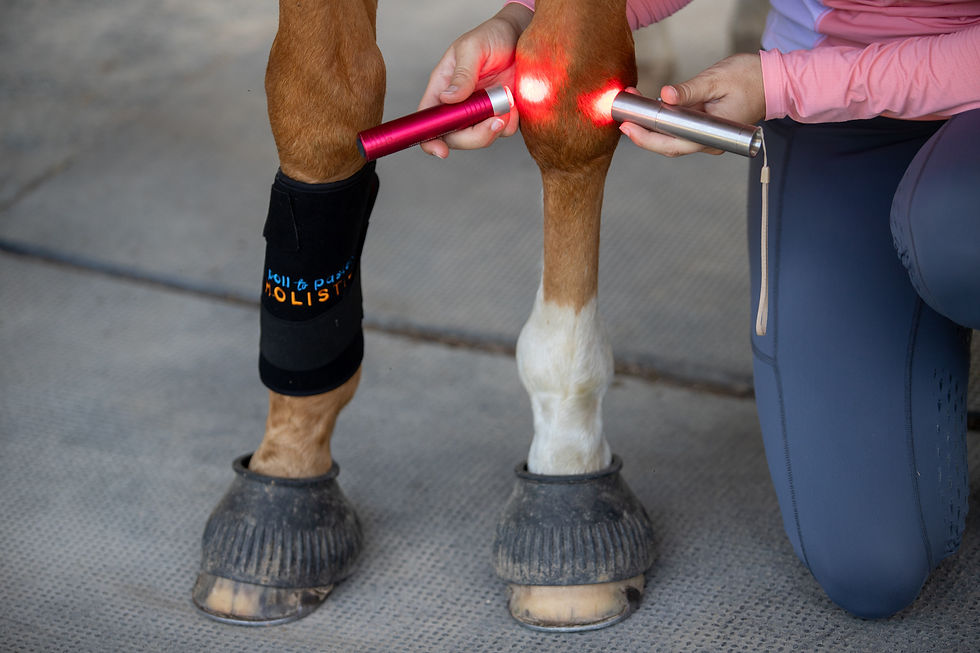
In the world of equestrian sports and equine well-being, the enchanting realm of PBM has proven to be a game-changer. Horses, revered for their strength and grace, find enhanced performance and expedited recovery through PBM. Whether it's a majestic thoroughbred or another riding companion, the strategic application of light therapy has shown promise in alleviating muscle tension, managing injuries, and promoting overall vitality. Through PBM, equine athletes gallop toward greater well-being, guided by the gentle radiance of light.
Here are blogs about equine conditions that will benefit from PBM/Red Light Therapy:
Canine Companions: Managing Pain and Promoting Healing in Dogs

For our loyal canine companions, pain relief and healing support are essential components of their health journey. PBM has emerged as a trusted ally in veterinary care, as laser therapy, offering an alternative avenue for pain management and rehabilitation. Dogs of various breeds and sizes, from energetic pups to seasoned seniors, have benefited from the soothing touch of light therapy. PBM's anti-inflammatory effects and potential to stimulate tissue repair make it a valuable tool in managing pain, supporting post-surgery recovery, and enhancing mobility. Through PBM, dogs embark on a path of improved well-being, their tails wagging in harmony with newfound comfort.
Here are a couple blogs on benefits of PBM/Red Light Therapy for dogs:
Feline Friends: Addressing Inflammation and Discomfort in Cats

Cats, with their enigmatic charm, also find solace in the healing embrace of PBM. From sprightly kittens to wise elders, cats have experienced the alleviation of discomfort and inflammation through this therapeutic light. Whether combating joint issues, addressing skin conditions, or aiding post-surgery recovery, PBM's potential to soothe and restore shines through in the lives of our beloved cats. With the power of light as a guide, these graceful creatures tread a path toward enhanced comfort and contentment.
Here are a couple blogs on benefits of PBM/Red Light Therapy for cats:
Photobiomodulation in Humans: Illuminating Wellness
The radiant promise of photobiomodulation extends beyond the animal kingdom, casting its transformative glow upon the landscape of human health and wellness. Within this section, we delve into the diverse applications of PBM, showcasing its potential to illuminate pathways to wellness for people of all walks of life.
Pain Management and Tissue Regeneration

In the realm of human health, pain can cast a shadow over daily life, affecting everything from mobility to quality of life. PBM emerges as a beacon of relief, offering a non-invasive and drug-free approach to pain management. By targeting specific wavelengths of light, PBM encourages the release of endorphins, the body's natural painkillers. Moreover, its regenerative effects on cells promote tissue repair, making it a valuable tool in addressing musculoskeletal discomfort, chronic pain conditions, and even post-operative recovery. Through PBM, individuals find a path toward pain alleviation and the rejuvenation of vitality.
Skin Health and Wound Healing
Our skin, often referred to as the body's canvas, plays a pivotal role in overall well-being. PBM paints a new picture of skin health, offering benefits that extend beyond aesthetics. By stimulating cellular activity and collagen production, PBM contributes to improved skin tone, texture, and elasticity. Furthermore, its ability to enhance circulation aids in the healing of wounds, whether they're surgical incisions or chronic ulcers. From cosmetic concerns to wound care, PBM's therapeutic touch brings forth a radiant canvas of skin well-being.
Neurological Conditions and Cognitive Enhancement
The intricate network of the human brain is both intricate and delicate, prompting the exploration of PBM's effects on neurological conditions. Research suggests that specific wavelengths of light employed in PBM have the potential to penetrate the skull and influence brain function. From mitigating the impact of traumatic brain injuries to addressing neurodegenerative disorders, PBM's neurological applications hold promise. Furthermore, some studies hint at PBM's potential to enhance cognitive function, offering a ray of hope for those seeking mental clarity and acuity. Through the harmonious interaction of light and neurons, PBM invites us to explore new avenues of brain health.
Exercise Recovery: Revitalizing Muscles and Performance
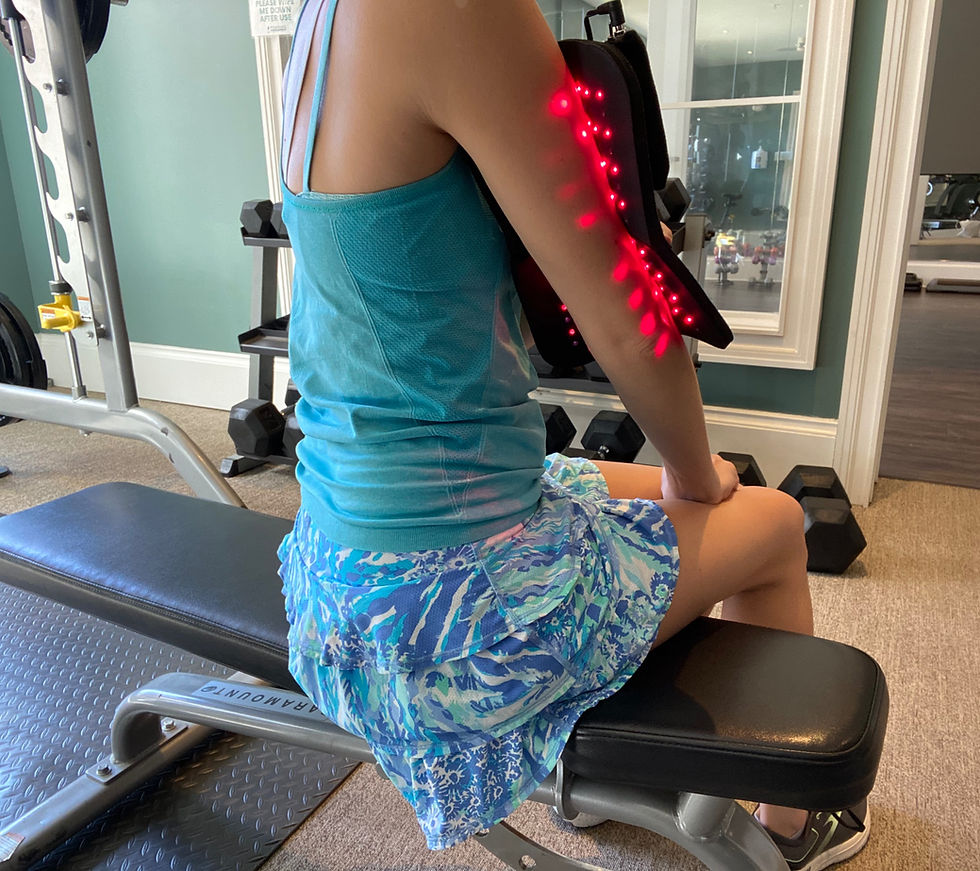
In the pursuit of physical excellence, recovery is as vital as exertion. PBM lends its transformative touch to exercise recovery, helping muscles recuperate and thrive. By reducing inflammation and enhancing circulation, PBM facilitates faster healing of microtears in muscles, reducing post-workout soreness. Athletes, fitness enthusiasts, and anyone engaged in physical activities can benefit from PBM's role in optimizing recovery, elevating performance, and empowering individuals to push their limits.
As we navigate the landscape of PBM in human health, we uncover a tapestry of applications that illuminate the path to wellness. From pain relief and skin rejuvenation to the intricate realm of brain health, and now to exercise recovery, PBM's transformative touch enriches lives with renewed vitality and well-being.
Comparing PBM with Other Therapeutic Modalities: A Path to Understanding
In the landscape of health and wellness, a multitude of therapeutic approaches beckon, each offering its unique promises. Photobiomodulation (PBM) stands as a distinctive contender, harnessing the power of light to evoke cellular transformation. This section embarks on a journey of comparison, juxtaposing PBM with other therapeutic modalities, to unearth the nuances that set it apart and highlight its potential as a transformative force.
Pharmaceuticals: Beyond Chemical Interventions

Pharmaceutical interventions have long been the cornerstone of modern medicine, wielding potent compounds to target specific ailments. However, these interventions often come with potential side effects and the risk of chemical interactions. PBM, in contrast, sidesteps the use of chemicals altogether. By leveraging the gentle touch of light, PBM promotes cellular responses without introducing foreign substances into the body, offering a non-invasive and holistic approach to healing.
Surgical Interventions: The Power of Precision
Surgical procedures wield the power of precision, offering targeted interventions for a wide array of medical conditions. Yet, surgery can entail discomfort, recovery periods, and potential complications. PBM emerges as a gentle companion to surgical approaches, showcasing its potential to enhance post-operative recovery. By stimulating tissue repair and reducing inflammation, PBM may minimize recovery times and alleviate post-surgical discomfort.
Physical Therapies: A Different Touch of Healing

Physical therapies, ranging from massage to chiropractic adjustments, hold the promise of alleviating pain and promoting well-being through hands-on techniques. PBM introduces a different dimension to healing. Instead of manual manipulation, PBM engages cellular responses through light energy absorption. Its influence extends beyond localized relief, potentially impacting cellular processes throughout the body, from energy production to inflammation control.
Electrotherapies: Navigating Electrical Pathways
Electrotherapies, such as electrostimulation, leverage electrical currents to stimulate nerves and muscles. While effective, these modalities are often limited by their need for direct contact with the body and may require specialized equipment. PBM, on the other hand, doesn't require direct contact and can be administered through light-emitting devices. This allows for a wider range of applications, from skin health to deeper tissue repair, and can be easily integrated into various treatment settings.
Mind-Body Practices: A Light on Cellular Resonance

Mind-body practices, like meditation and yoga, emphasize the interconnectedness of mental and physical well-being. PBM complements these practices by addressing the cellular aspect of health. While mind-body practices focus on mental and emotional harmony, PBM delves into cellular rejuvenation, potentially enhancing the overall effectiveness of holistic wellness approaches.
In the panorama of therapeutic modalities, PBM unfurls as a unique tapestry woven with light's transformative potential. By steering clear of chemicals, offering gentler recovery options, engaging cellular responses, and embracing non-invasive administration, PBM steps forward as a harmonious partner in the journey of healing, opening doors to a novel avenue of well-being.
Conclusion: Photobiomodulation Illuminating the Path Ahead
As we reach the culmination of our exploration into photobiomodulation (PBM), a realm of possibilities comes into focus. This concluding section revisits the benefits, underscores the shared essence of health, and envisions the bright path that PBM paves ahead.
The advantages of PBM stand as distinct markers of its potential. From bolstering cellular function and energy generation to soothing inflammation and nurturing tissue repair, PBM’s effects resonate across the human and animal spectrum. These outcomes collectively underscore its capacity to reshape the landscape of health and offer new avenues for well-being.
Our journey has spotlighted a compelling theme—the interconnectedness of health among humans and animals. PBM’s impact bridges the gap between species, revealing shared biological responses. Equine therapy enhances horse performance, dogs find relief from discomfort, cats experience reduced inflammation, and humans benefit from neurological support. This underscores the universal threads that tie life forms together in the tapestry of wellness.
As our exploration draws to a close, the horizon of PBM's future gleams with promise. With ongoing research further revealing its mechanisms and refining applications, PBM is poised to redefine medical paradigms. Positioned alongside established therapies, its non-invasive approach and gentle effectiveness continue to captivate the medical community.
As we conclude this journey, we invite you to carry forward the torch of curiosity. Let the bright potential of PBM guide your exploration of health and healing, shedding light on the intricate interactions between light and life. With each beam of light, a world of possibilities unfolds, offering hope, rejuvenation, and a future where light illuminates the path to enhanced well-being.
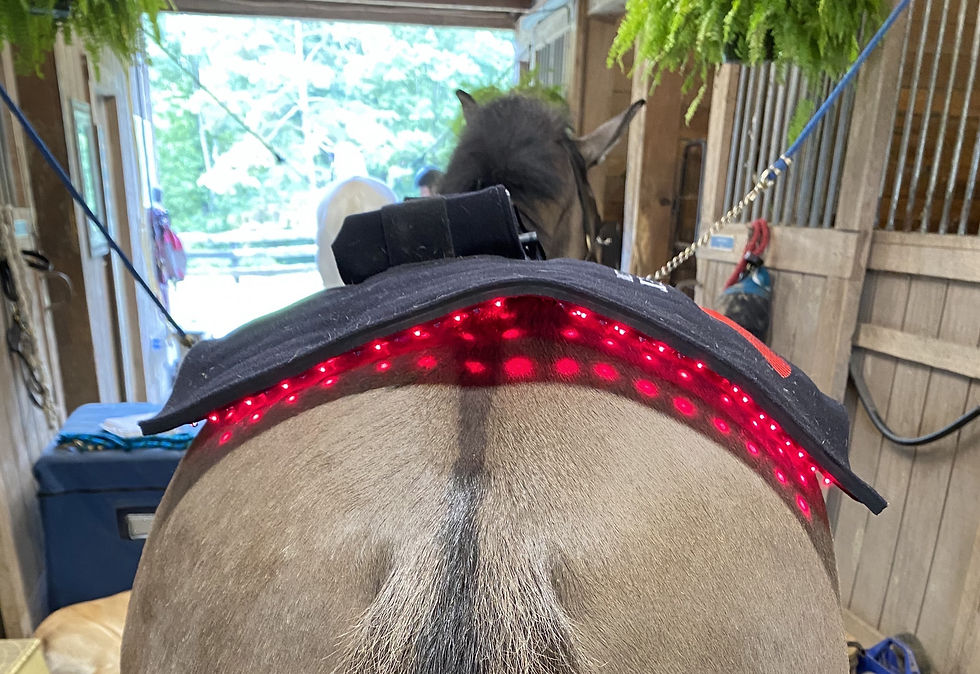
#photobiomodulation #redlighttherapy #lighttherapy #healing #photobiomodulationforanimals #photobiomodulationforhumans #pets #horses #animals #humans #health #lighthealing #lighthistory #historyoflight #lightforhealing #redlighttherapypads #healthy #pbm #people #exerciserecovery #woundhealing #arthritis #polltopastern #jointhealth #happy #skinhealth #collagenproduction #painmanagement


